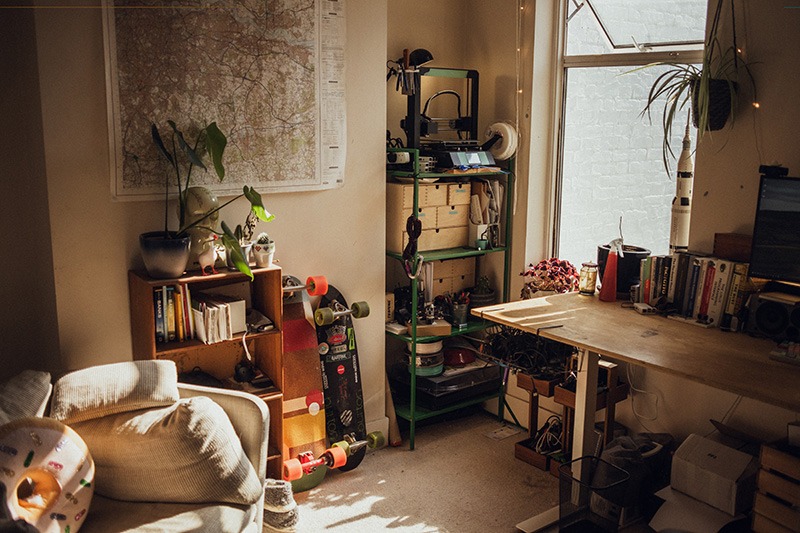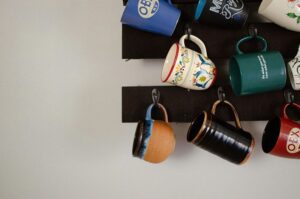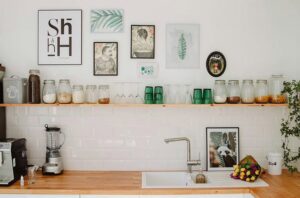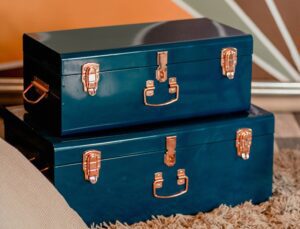
If interior design and decor are on your social media radar, you may have noticed the rise of Cluttercore.
It sprung up in 2020 in the throes of the pandemic, and is described as maximalist, anti-minimalist and even as a celebration of mess.
Cluttercore – what is it?
Cluttercore is the unashamed romanticisation of stuff by putting it on display. Forget keepsake boxes and photo albums in the attic – this is all out and proud. It is not quite a celebration of chaos, but ideally a selection of curios, themes and bric-a-brac which reflect your true self.
Think big collections of stuffed superheroes and Helllo Kittys crowded on a couch with a crocheted rug slung over the back. Or walls full of 18th century photographs with intricate frames.
On a more mainstream, relatable level, indoor plants have never been more popular and this is a lighter version of the trend.
Cluttercore trending
Minimalism as a concept gained popularity way back in the 50s and 60s and manifested as simplistic trends in music, art, and design. It has been on the rise ever since, fuelled partially by the following:
- Aesthetic trends
- Environmental concerns
- A backlash against consumerism
- Financial turmoil and rising personal debt
- Personal computing advances and digitisation
Meanwhile television shows about the horrors of hoarding and the benefits of minimising are popular. They push the narrative that minimalism is good, and mess is a personal or moral failing.
It’s no surprise then, that Cluttercore emerged as a backlash to that, because that’s how popular culture works. A rising trend only gets so far until there is a backlash and a swing in the opposite direction. Social media has exacerbated that tendency in recent years, anticipating the next trend by creating it. This means as soon as the internet is awash with high-waisted jeans, contributors want to be the first to shock by showing off hipster jeans. And on it goes.
Cluttercore pros
- As a backlash to the restrictiveness of minimalism, cluttercore has a more accepting vibe. It gives you room to breathe, scope to relax your standards. And that’s a good thing. Nobody lies on their death bed wishing they had kept a tidier house. The notion of cleanliness as a marker of morality is unhelpful and let’s face it – patriarchal. If your house is not all about shiny bare surfaces, it’s not noticeable if you haven’t tidied up. Nestled in with all your collectables and bits-and-bobs, a few rogue items can go undetected and that’s okay.
- Cluttercore done well, looks brilliant. It can be a great expression of the householder as well as surrounding them with meaningful objects. It’s creative and customisable rather than prescriptive. It creates talking points for guests and makes for a super interesting environment in general.
- It’s cosy. The perfect antidote to the unprecedented times of 2020 and 2021. Our belongings are comforting and predictable and humans need that, especially in uncertain times.
Cluttercore cons
- One word: dust. I love Cluttercore aesthetically but from a practical perspective it sucks. It’s really hard to dust surfaces when they are covered in figurines, not to mention the figurines themselves. It’s worse if you have pet hair floating around and landing on your stuff. I am by no means a clean freak but dust is mostly made up of skin cells and even worse, it can cause a lot of health problems. Even if you’re like me and don’t dust very often, it’s nice to be able to dust really easily.
- Novelty wears off. The bunches of dried flowers and dolls heads look fantastic for a while but then it’s just more … stuff. At best you don’t notice them any more and at worst they get annoying. While giving you asthma.
- I like the look of an interesting space but that doesn’t mean I want to live in it. Personally I find it mentally draining. My eyes can’t rest when there is so much going on, especially if the goings-on are accumulating dust. If I want to look at quirky aesthetics I use a museum or the internet. Maybe your clutter tolerance is higher than mine, but be mindful of your mental energy.
Striking a balance
An ideal curator brings in collections of amazing pieces, and artfully arranges and maintains them. Then periodically replaces them to perpetuate aesthetic appeal.
Most of us don’t have that luxury, which might mean a whole lot of dust-collectors as housemates. If you are ok with that, all good. Just ask yourself periodically:
- Does my house make me feel good?
- Are my items there for a reason?
- Can I find my belongings when I need to?
If that checks out, carry on.
To summarise, Cluttercore is done best when it is an intentional aesthetic. Cluttercore is not an excuse to leave wet towels on the floor. You can tell that to your kids, housemate, partner and whoever is listening.
If you want a more measured approach to decor, have a look at the Rule of Three. Once you know about it, you’ll see it everywhere.
If you think you may need a Professional Organiser, have a look at this checklist.
If you want help curating your aesthetic and living intentionally, reach out and get in touch.






























